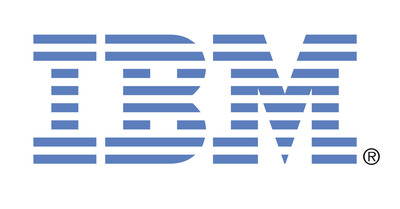IBM and ABB Scientists Collaborate to Improve Energy Transmission for More Efficient Grids
BADEN, Switzerland and RUESCHLIKON, Switzerland, Nov. 1, 2011 /PRNewswire/ -- Scientists at IBM (NYSE: IBM) and ABB, the world's largest builder of electricity grids, are using supercomputers to study and potentially develop a new type of high-voltage insulator that will improve the efficiency of transmitting electricity. An improved insulator has the potential to transform the power grid by reducing energy loss and outages caused by material deterioration when exposed to weather.
(Logo: http://photos.prnewswire.com/prnh/20090416/IBMLOGO)
Photos on Flickr http://www.flickr.com/photos/ibm_research_zurich/sets/72157627240614144/
Once electricity is generated it is transmitted from the power station to the end user via underground cables or overhead power lines. Up to seven percent of energy loss* during transmission can be attributed to the insulation system. This waste happens for a number of reasons including the quality conditions of the grid as well as by environmental influences such as humidity, high winds and/or pollution.
"It's like going to the market and buying a full container of milk and then arriving at home to see a glassful has disappeared," explains Dr. Philip Shemella at IBM Research - Zurich. "Using supercomputers we can simulate at the molecular level how the insulators are damaged by the environment and design them to be more efficient and reliable."
A Collaboration of Expertise
Started more than two years ago, IBM and ABB scientists in Switzerland formed a joint project to simulate the molecular dynamics of the insulators, which are made of silicon rubber, scientifically known as Polymethylhydrosiloxane or PDMS. The goal of the project was to better understand the physical processes and potential for improved design methods of high-voltage insulation materials.
"IBM brings its extensive expertise in complex computer simulation and we bring over 125 years of experience with electricity," said Dr. Oliver Fritz, ABB researcher, based in Baden-Dattwil, Switzerland.
Using an IBM Blue Gene/P supercomputer and massively parallel algorithms, the scientists were able to simulate and study the individual molecules used in the silicon rubber to better understand how it reacts to damage caused by the environment. With advanced simulations and the computing power available, the scientists were able to simulate realistic models of the material comprising approximately one million atoms. These simulations will lead to testing new materials in the silicon rubber composition to improve their resiliency to damage.
The findings, published today in The Journal of Physical Chemistry B, DOI: 10.1021/jp207589p in a paper titled "Surface Dynamics of Amorphous Polymers Used for High-Voltage Insulators" helps to unravel the mechanism of water repulsion on the insulator surface.
"Currently, we are running simulations to study how a drop of water affects the reliability of the insulating material. Surprisingly, this is very significant, particularly when it is extrapolated across the entire power grid," adds Shemella.
The initial findings were published in the Journal of Physical Chemistry B, as "Molecular Motion of Amorphous Silicone Polymers" by P. Shemella et al., 2011, 115 (12), 2831-2835, DOI 10.1021/jp111318d (2011). They were also presented as a poster: "Improving Functional Properties of Amorphous Silicone Polymers with Simulation" at the Spring 2011 Materials Research Society meeting in San Francisco, California, where it was recognized with the Best Poster Award. The Spring Meeting had more than 2,000 posters and only 10 were awarded with the $400 cash prize, which went to charity. The research was conducted by Philip Shemella, Teodoro Laino and Alessandro Curioni from IBM Research - Zurich and Oliver Fritz, ABB Corporate Research - Baden-Dattwil.
A History of Scientific Advancements Focused on Smart Grids
In April 2011, IBM celebrated the 25th anniversary of the discovery high temperature superconductivity by IBM scientists Alex K. Mueller and Georg Bednorz. Their remarkable discovery, which was recognized with the Nobel Prize for Physics in 1987 is now being applied towards improving the energy grid by making the transmission of electricity more efficient.
For more visit: http://www.ibm.com/ibm100/us/en/icons/hightempsuperconductors/
Launched in 2009, the island nation of Malta turned to IBM to help mitigate its two most pressing issues -- water shortage and skyrocketing energy costs. The result is a combination smart water/grid system launched that uses instrumented digital meters to monitor waste, incentivize efficient resource use, deter theft and reduce dependence on oil and processed seawater. Together, Malta and IBM are building the world's first national smart utility system.
For more visit: http://www.ibm.com/ibm100/us/en/icons/gridnation/
About IBM
For more information visit www.research.ibm.com
About ABB
ABB (www.abb.com) is a leader in power and automation technologies that enable utility and industry customers to improve performance while lowering environmental impact. The ABB Group of companies operates in around 100 countries and employs about 124,000 people.
* Source: According to the U.S. Energy Information Administration, http://www.eia.gov/tools/faqs/faq.cfm?id=105&t=3
For more information please
contact:
Press Office IBM Research -
Press Office ABB Switzerland Zurich
Lukas Inderfurth Chris Sciacca
Tel: 058 585 47 07 Tel: 044 724 8443
Mail: lukas.inderfurth@ch.abb.com Mail: cia@zurich.ibm.com
Press Office IBM - U.S.
Fabienne Guildhary
1-917-472-3733
fguildhary@us.ibm.com
SOURCE IBM
